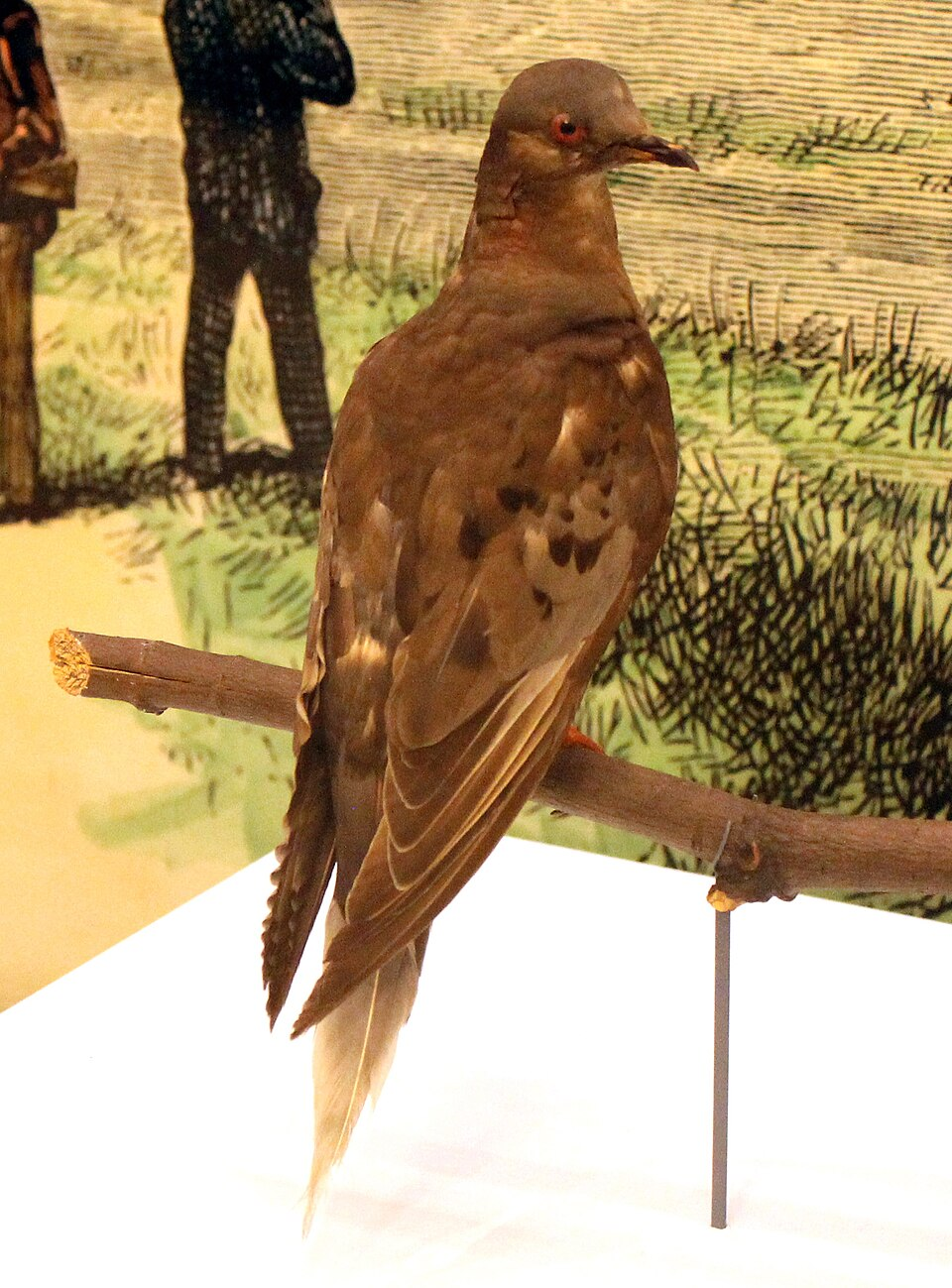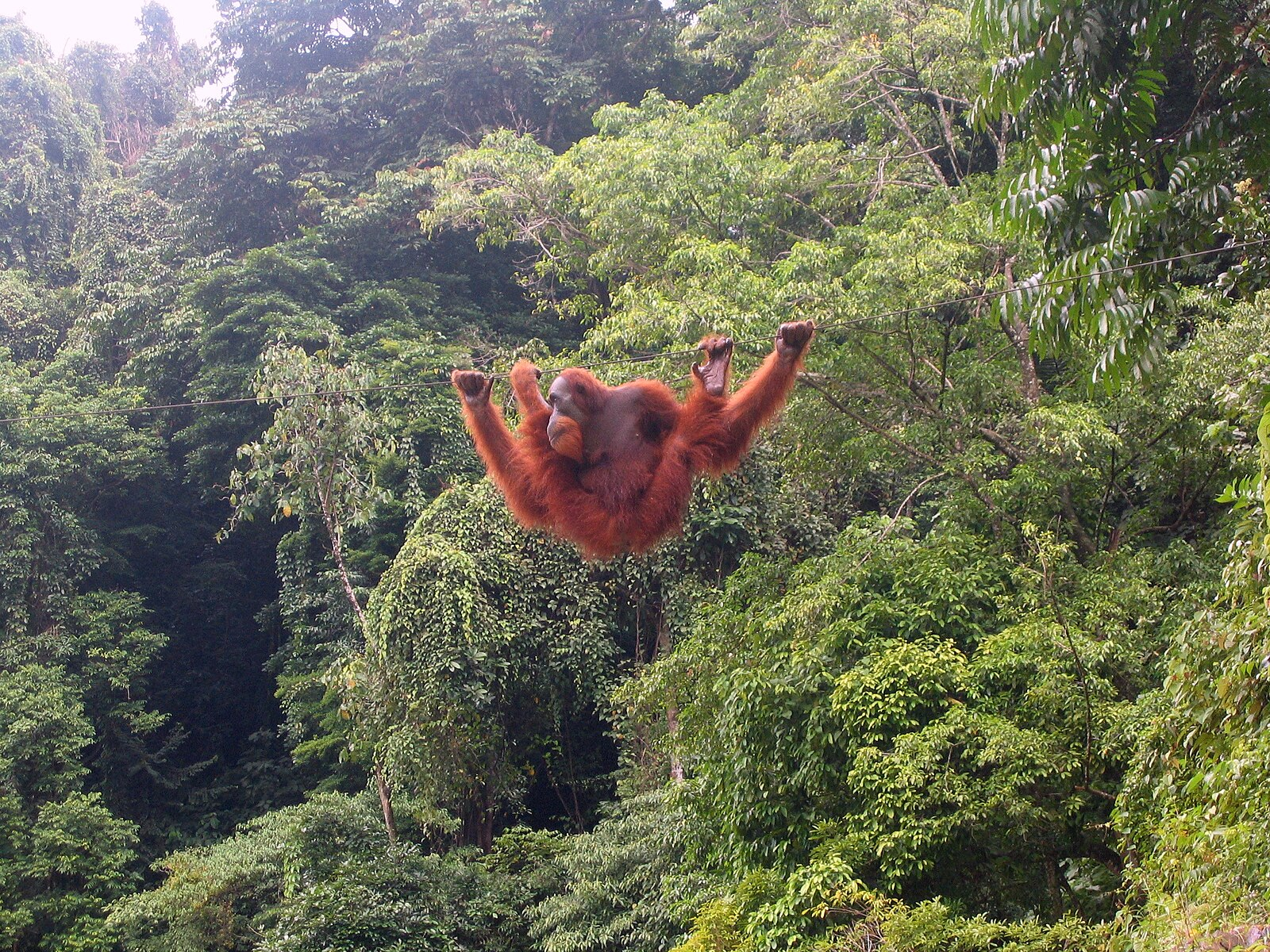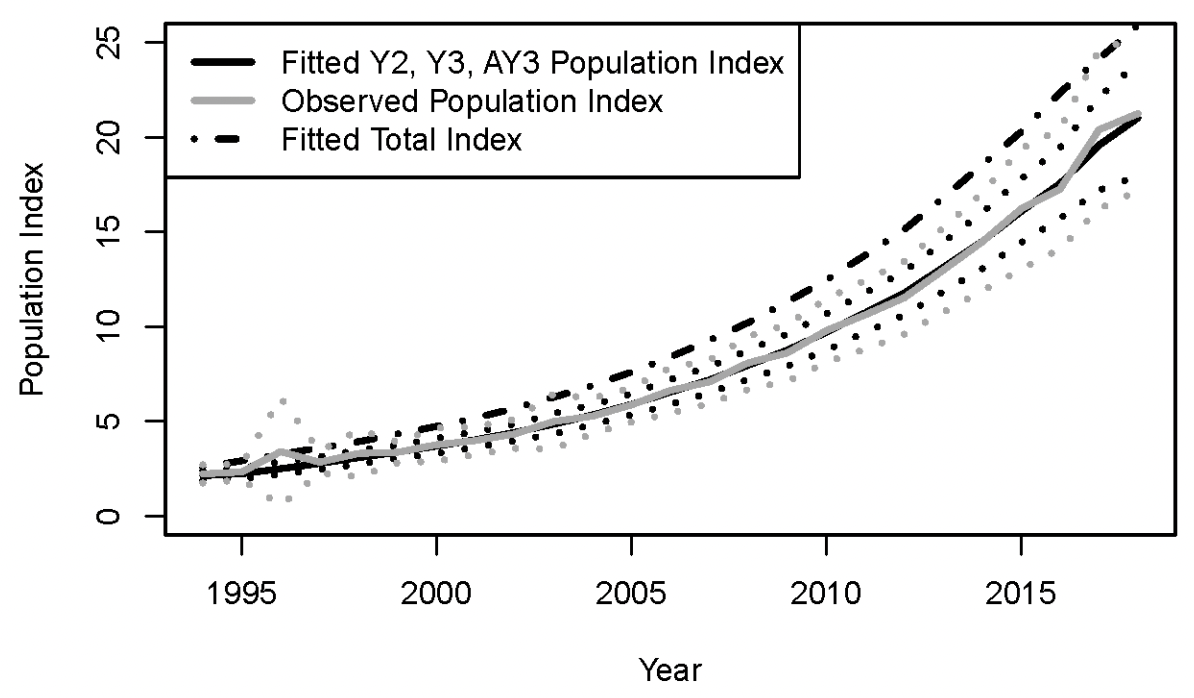IB Syllabus focus:
‘Investigate one human-caused extinction, one critically endangered species, and one species improved by intervention; analyse drivers, ecological and societal impacts, and conservation tactics.’
Case studies of extinction, endangerment, and recovery illustrate how human activity shapes biodiversity. They highlight ecological consequences, societal costs, and conservation measures essential for preventing further biodiversity loss.
Human-Caused Extinction
The Passenger Pigeon (Ectopistes migratorius)
The Passenger Pigeon, once the most abundant bird in North America, became extinct by 1914 due to human activity.

Taxidermy mount of Martha, the last known passenger pigeon, displayed at the Smithsonian’s National Museum of Natural History. The species collapsed due to market hunting and habitat loss, exemplifying rapid, human-driven extinction. Source.
Drivers of extinction:
Overhunting for food and sport.
Habitat loss caused by deforestation for agriculture.
Failure of breeding systems when flocks became too small for effective reproduction.
Ecological impacts:
Loss of a major seed disperser, altering forest regeneration patterns.
Decline in predator populations that relied on their seasonal abundance.
Societal impacts:
Highlighted the destructive potential of unregulated hunting.
Sparked the early conservation movement in the United States, influencing wildlife protection laws.
Critically Endangered Species
The Sumatran Orangutan (Pongo abelii)
The Sumatran orangutan is classified as Critically Endangered by the IUCN Red List.

Sumatran orangutan in lowland rainforest at Bukit Lawang, northern Sumatra. The image illustrates arboreal behaviour and the forest structure whose loss drives population declines. Source.
Drivers of endangerment:
Deforestation for palm oil plantations and logging.
Habitat fragmentation, restricting gene flow between populations.
Poaching for the illegal pet trade.
Habitat fragmentation: The breaking of continuous habitat into smaller, isolated patches, reducing species survival and reproduction.
Ecological impacts:
Loss of a keystone seed disperser in tropical forests.
Decline in forest biodiversity and resilience.
Societal impacts:
Conflict between conservation needs and economic reliance on palm oil.
Increasing global awareness about sustainable consumption and ethical sourcing.
Conservation tactics:
Establishing protected reserves in Sumatra.
Campaigns promoting sustainable palm oil certification.
Rehabilitation centres reintroducing rescued orangutans into the wild.
Recovered Species
The American Bald Eagle (Haliaeetus leucocephalus)
The Bald Eagle, once critically threatened, has become a symbol of successful conservation.

Observed and modelled indices of bald eagle abundance in the contiguous United States (1994–2018), showing strong upward trends after regulatory and management interventions. Lines represent observed index and fitted indices (including age-class totals); credible-interval dots are shown. Source.
Drivers of decline:
DDT pesticide use, which thinned eggshells and reduced reproductive success.
Hunting and persecution, as they were wrongly viewed as livestock threats.
Habitat destruction from expanding urbanisation.
DDT: A synthetic pesticide (dichlorodiphenyltrichloroethane) once widely used, later banned due to its harmful ecological impacts.
Ecological impacts:
Decline of a top predator, disrupting food webs.
Increase in fish populations that were previously controlled by eagle predation.
Societal impacts:
Loss of a national symbol in the United States threatened cultural heritage.
Public mobilisation led to stronger environmental legislation.
Conservation tactics and recovery:
The ban of DDT in the United States (1972).
The Endangered Species Act (1973) provided legal protection.
Captive breeding and reintroduction programmes boosted populations.
The species was removed from the U.S. endangered species list in 2007.
Comparative Insights
Key Lessons from Case Studies
Extinction (Passenger Pigeon): Demonstrates irreversible biodiversity loss due to human exploitation and lack of regulation.
Endangerment (Sumatran Orangutan): Shows how ongoing human pressures create critical threats, requiring urgent and multi-faceted conservation strategies.
Recovery (Bald Eagle): Illustrates that targeted policies, legislation, and public support can successfully reverse declines.
Drivers, Impacts, and Tactics
Drivers: Overexploitation, habitat loss, pollution, poaching, and unsustainable agriculture.
Ecological impacts: Disrupted food webs, reduced genetic diversity, and weakened ecosystem services.
Societal impacts: Loss of cultural symbols, economic consequences from degraded ecosystems, and global awareness of environmental responsibility.
Conservation tactics: Legal protection, habitat restoration, sustainable resource management, captive breeding, and community engagement.
FAQ
Case studies provide concrete examples that illustrate abstract concepts such as extinction, endangerment, and recovery. They help link ecological theory to real-world events and management strategies.
Using case studies allows students to explore the complexity of drivers, societal impacts, and conservation responses, demonstrating how local and global pressures interact.
Keystone species exert a disproportionately large influence on ecosystem structure and function.
Passenger pigeons acted as seed dispersers affecting forest dynamics.
Sumatran orangutans shape tropical forests by dispersing fruit seeds.
Bald eagles regulate prey populations as apex predators.
Losing or restoring these species directly alters ecosystem stability.
Cultural values influence priorities. For example:
The passenger pigeon’s extinction shocked the public, sparking early conservation movements.
The bald eagle’s role as a U.S. national symbol drove strong protection measures.
Orangutan conservation is hindered by economic reliance on palm oil, but global consumer pressure is shaping policy.
These examples show how conservation success often depends on cultural and societal significance.
Ecosystem resilience depends on biodiversity and the presence of key species.
Extinction of passenger pigeons reduced resilience by eliminating critical ecological roles.
Endangerment of orangutans highlights how fragmentation weakens resilience through genetic isolation.
Recovery of bald eagles demonstrates that resilience can be restored with sustained intervention.
The case studies reveal how human actions either erode or rebuild ecological resilience.
International agreements provide frameworks for cooperation:
CITES restricts trade in orangutans and their body parts.
The banning of DDT, supported by international research, aided bald eagle recovery.
Although too late for the passenger pigeon, lessons from its extinction informed treaties promoting sustainable use of species.
Such agreements ensure conservation is not limited to national boundaries but involves global responsibility.
Practice Questions
Question 1 (2 marks)
Identify one human-caused extinction and state one ecological impact of this extinction.
Mark scheme
1 mark for correctly naming a relevant human-caused extinction (e.g., Passenger Pigeon).
1 mark for stating one ecological impact (e.g., loss of seed dispersal affecting forest regeneration, disruption of food webs).
Question 2 (5 marks)
Compare the drivers and conservation responses of one critically endangered species and one recovered species.
Mark scheme
Up to 2 marks for describing drivers of endangerment (e.g., deforestation, poaching for Sumatran orangutan; pesticide use, hunting for Bald Eagle).
Up to 2 marks for outlining conservation responses (e.g., reserves, sustainable palm oil campaigns for orangutan; DDT ban, Endangered Species Act, captive breeding for Bald Eagle).
1 mark for comparison or linking statement showing clear differences or similarities between the two case studies.

